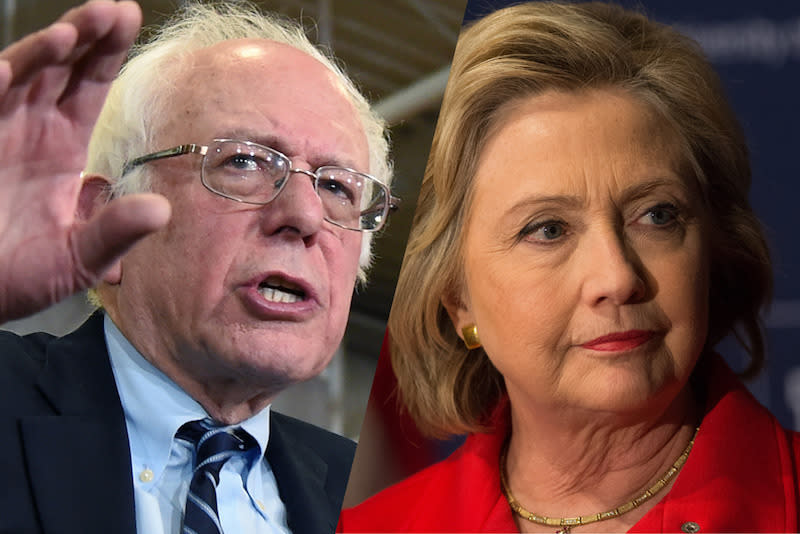Will the Nevada caucuses be a mess like Iowa’s?

Sen. Bernie Sanders speaks during a campaign rally in Las Vegas, and Hillary Clinton speaks at the University of Nevada, Reno. (Photos: Ethan Miller-David Calvert/Getty Images)
On Saturday, Bernie Sanders and Hillary Clinton face off in another Democratic presidential primary caucus, this time in Nevada.
Close races tend to strain the quirky and unreliable caucus system, where voters can argue with each other and attempt to persuade their undecided neighbors before physically dividing up into groups of supporters to be counted. The Des Moines Register’s editorial page called this year’s caucuses a “debacle,” criticizing “inconsistent counts, untrained and overwhelmed volunteers, confused voters, cramped precinct locations, a lack of voter registration forms and other problems.” Results were so close in some precincts that Iowa Democrats flipped coins to assign delegates. Five precincts reported the wrong number of votes due to human error, and complaints about irregularities prompted the party to audit its own results showing Clinton the narrow winner. That audit declared Clinton the winner by just .25 percentage points, shrinking her earlier .27 percentage-point victory over Sanders.
Will the Nevada caucuses repeat that “debacle”?
The latest poll shows Sanders and Clinton in a statistical tie in Nevada, which means caucus results will likely be scrutinized as closely as they were in Iowa. But at the very least, there will be no coin flips. In Nevada, party officials use a more regional approach for breaking ties: They keep sealed decks of cards on hand. So for example, if a precinct has five delegates to award and the votes are split evenly between Sanders and Clinton, they use a deck of cards to decide which candidate gets the fifth delegate. They cut the deck and have each side pick a card — and the campaign with the high card wins the extra delegate.
As for whether the caucus locations will be as overcrowded and prone to reporting errors — it’s possible, but unlikely.
Nevada has only had early caucuses since 2008, thanks to the maneuverings of then-Majority Leader Harry Reid, the senior Nevada senator. That year, roughly 120,000 voters showed up — about a quarter of registered Democratic voters — and precincts registered an additional 30,000 new voters who showed up to caucus. Everything went smoothly, and few expect turnout to be significantly higher this year than in 2008, or for there to be more problems.
“The expectation I have is it’s going to run very smoothly,” said Jon Ralston, a longtime political reporter in Nevada and a columnist for the Reno Gazette-Journal.
Historically, the Republican caucus — set to take place Tuesday — has been more problematic in Nevada. The GOP is weaker and less organized than Democrats in the state. In 2012, only about 33,000 Republicans showed up to caucus, 8 percent of the state’s active GOP voters. Even with such a tiny turnout, party officials took days to release the full results.
“It took them three days to count 33,000 votes,” Ralston said.
In August 2012, delegates who supported Ron Paul revolted at the state convention, refusing to vote for Mitt Romney even though he handily won the caucus. The former Republican Party chairman in Nevada, Michael McDonald, told the Washington Examiner that the caucuses were a “total disaster” and an “embarrassment for the state.”
The party changed its process slightly this year to make it more like a typical primary than a caucus. Now Republican voters can show up anytime during a three- or four-hour window to cast a vote for their preferred candidate and then leave. They don’t have to wait at the precinct to listen to speeches and discuss the candidates. In theory, this should boost turnout — but Ralston remains skeptical.
“[The GOP] has no money, they have no idea what they’re doing, so the campaigns have been doing it all,” he said.
Unlike Democrats, who can show up at a caucus site and register to vote on the spot, Republicans must register at least a week before caucus day.


